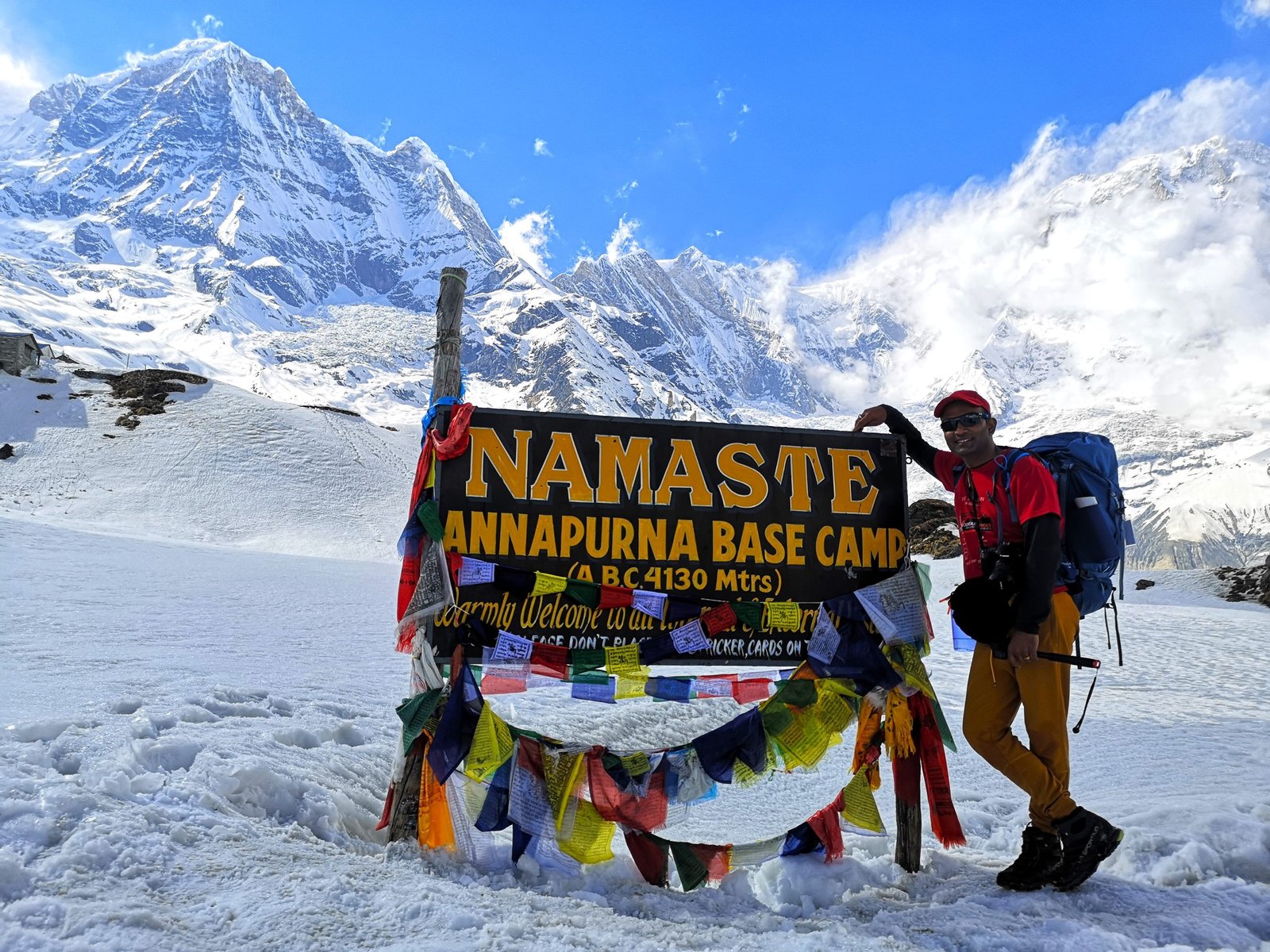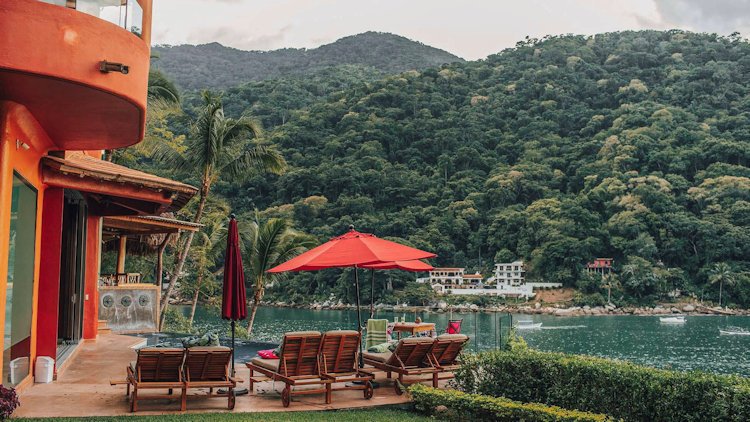Navigating Trekking Permits for Annapurna Base Camp
Getting your trekking permits for Annapurna Base Camp is one of the most important things to do before starting a journey in this beautiful part of Nepal. The Annapurna Conservation Area Project (ACAP) requires that trekker have permits to help protect the environment and for your safety while exploring these communities. The process can sound intimidating at first, but if you know what to expect and how to get ready for the program it is quite manageable. Lets look on that.
The first permit is your entry to the conservation area around the Annapurna massif, known as the Annapurna Conservation Area Permit (ACAP). This permit is conservation related and meant to help keep the ecological balance of the area. However, trekkers have the option of getting the ACAP from places like the Nepal Tourism Board offices in Kathmandu and or Pokhara and can also get it through any authorized trekking agency. These are some example questions that you need to answer when you fill out an application form and pay a fee, which obviously gets cycled into local conservation initiatives: You should bring a copy of your passport as it may be needed when applying for the permit.
ABC Trek Apart from the ACAP, trekkers need a Trekkers’ Information Management System (TIMS) card as well. It is a necessary card to check in order to keep the track of the trekkers safe, and Nepal local bodies can also come to know about their trekking work for help if there happens any emergency. One legendary card, just like the ACAP — You can buy a TIMS card in Nepal Tourism Board or registered trekking companies! There is a small charge for the process and details of trekkers itinerary and personal information will be taken.
Also, the permits have to be shown at many checkpoints while you are on a trek route and find one thing difficult with respect to keeping them handy. Next are some of the check points where people need to enter their details about documentations such as Birethanti, Ghandruk which may take a long time because Police men and Army Man just want back from lunch so they ḓont allow anyone to go on third world unless trekker had proper documentation. Having both permits on your person not only enables you to walk without the fear of prosecution under local law, but also serves as an added bonus to the overall trekking experience (as they add value to each pack and promote sustainable tourism, something which is increasingly important).
But before you can get any permits, you need to be prepared. You can research regulation changes and updated fees prior to your stay. Trekking agencies can also come in handy, helping to lead you through step-by-step and to make sure all documentation is cared for (ideal those who intend to trek on their own).
Overall, going through the Annapurna Base Camp trekking permits is pretty basic as long as you know what to do and have some help. Having the ACAP and TIMS permits is not only helping trekkers to abide with local laws but also helps to preserve this wonderful natural resource. Now armed with your permits, you are able to enjoy the beautiful scenery and cultural immersion that come living in Peru.
Understanding Trekking Permits
If you are planning a trek to Annapurna Base Camp then knowing the prerequisites of the trekked permits is quintessential. Annapurna region Annapurna is well known for some of the most beautiful landscapes and diverse ecosystems in the world with unique regulations enforced to maintain sustainable tourism and conserve its environment. The trekking permits allow trekkers to come in and enjoy the incredible beauty of this area, while simultaneously helping to maintain its natural resources. There are two key permits that you will need when visiting this wonderful part of the world: Annapurna Conservation Area Permit (ACAP) Trekkers’ Information Management System (TIMS) Card The process is simple and somewhat seamless, including the acquiring of some permits would ensure you go through an easy experience while trekking once you have all required information related to the specifics. Forgoing the permit system, along with abiding by local regulations and conservation efforts, contributes towards trekkers being able to enjoy responsibly the incredible beauty of the Annapurna massif.
Types of Permits Required
Annapurna Region has two main permits for trekking i.e. Annapurna Conservation Area Permit (ACAP) & Trekkers’ Information Management System (TIMS) Card. ACAP is a must-go permit for all those trekkers who are setting their foot in the Annapurna Conservation Area which covers wide biodiverse region and scenic wonders of nature. The permit fee goes to work on conservation programs for the environment and culture. Meanwhile, the TIMS Card is intended to help keep trekkers safe by keeping tabs on where they are going and who they have with them. It is a document that may be required for authorities to see in case of difficulty and also serves as monitoring of the trekking doing. Although, both permits are important not only to be at par with local regulations but also to promote sustainable tourism. This is also one of the essentials required in getting ready for a well-prepared and responsible hike towards Annapurna Base Camp.
2) Annapurna Conservation Area Permit (ACAP) :
Annapurna Region: Annapurna Conservation Area Permit (ACAP) is a must-have for all trekkers going to the Annapurna range. 3. Annapurna Conservation Area trekking permit The permit allows the trekkers to enter the Annapurna Conservation Area, a beautiful protected area in the region known for its rich biodiversity and exquisite landscapes. A new future Conservation ACAP was developed and designed to visitors as a sustainable tourism, do not damage the environment, and have natural resources for them to enjoy. The revenue generated through the permits helps to support financial resources for local community initiated conservation and development projects. Its relatively easy to get the ACAP from any of the Nepal Tourism Board offices in cities like Kathmandu and Pokhara or through other various trekking agencies across the country. On the permit application, trekkers will need to fill in their personal details, name, nationality, and passport. While trekking one must have a copy of this permit as it needs to be shown at multiple check-points enroute. Trekkers, in obtaining the ACAP are not only adhering to local law but are taking an active role in preserving this incredible area.
TIMS (Trekkers’ Information Management System) Card
Trekkers Information Management System (TIMS) Card is another very important permit necessary for hiking in the Annapurna region. The purpose of this card is to allow trekking companies or guides to monitor the whereabouts of trekkers and improve safety as well as create better coordination between trekkers, their teams and the authorities. TIMS Card: Guides and officials on the program track trekking activity, making trekker registration possible in case of emergency. This is even more essential for security as it enables authorities to identify and deal with any incident in their first stages. Anyone who plans on doing a trek in Nepal must first apply for the TIMS Card, which is an identification and record keeping system that allows the user to leave information about their anticipated activities in case of emergency. As with all other trekking permits, you can get the card from Nepal Tourism Board or registered trekking agencies in Kathmandu and Pokhara. You have to pay for this application of no more than 20 rupees — that, in turn, funds the management and upkeep of trekking routes. During the trek you need to have the TIMS Card with you, sometimes they check it on a few points of the trek. While procurable, the TIMS Card actually helps trekkers themselves to comply with local rules and treks will also be safer for everyone as a result.
Where to Apply for Permits
The Annapurna Base Camp trek Permit requires certain permits, so it is important to know which office in Pokhara you can find them so the whole thing goes down as smoothly as possible. The Annapurna Conservation Area Permit (ACAP) and TIMS Card: Must be obtained in person at office location. The Nepal Tourism Board( NTB) offices situated in major cities such as Kathmandu and Pokhara are the most common places to apply. These offices are equipped to help trekkers with the application and have the most current fee and requirement information. Besides, many licensed trekking agencies provide permit arrangement services which gives more convenience to trekkers by permitting the acquisition of respective permits along with his or her overall treks. Especially for first time trekkers who might not know what to expect. A valid passport, a photograph similar to your would-be passport picture and a copy of the main pages of your passport are some of the documents you must have so that you can speed up the application. If you apply in the correct places then this will enable you to obtain your trekking permits before departure.
Application Process for ACAP
You can apply for ACAP, Annapurna Conservation Area Permit easily in just few steps. Trekkers must go to Nepal Tourism Board (NTB) located in Kathmandu or Pokhara office directly or they can also apply through authorized trekking agencies. Before you actually get there to trek, you must complete an application with some basic info like your name, nationality, passport number and planned dates of treks. A passport-sized photograph is also something you need to take with you, as this tends to be a requirement for the permit application. After the form is filled properly trekkers have to pay the permit fee at its amount which varies on trekking days and seasons of trek. The nominal fee helps to bring out the conservation part of tourism in this region which is the need of time as well for balance proliferation of mass tourism. Once you have the payment is done, your ACAP will be available for you ready before at the of your trek so it must be needed to keep during the trek. It is recommended to get a photocopy of the permit if the original gets stolen or destroyed. Just follow the mentioned steps and easily get your ACAP—which leaves you fresh, ready to enjoy beautiful Annapurna region!
TIMS Card Application Process
It is mandatory for trekkers entering into the Annapurna region to get Trekkers’ Information Management System (TIMS) Card, which helps improve safety and security. Requirements the TIMS Card : application of Printed Copy of Application for the TIMS Card is Very Simple. You can get this card before your trek begin from Nepal Tourism Board (NTB) offices in Kathmandu and Pokhara or through registered trekking agencies. In order to do so, trekkers must fill out an application form containing their personal information (full name, nationality,passport number) and the details of their trek itinerary. The application generally calls for a passport size photo. Trekking Management efforts and safety is financed by TIMS Card, so before departure, trekkers must reread the form to pay for it. The processing time is usually less but trekkers are advised to apply prior to the trek date so that no last hour problem occurs. After the card has been acquired, it should be kept with you all the time during your trekking for checking by authorities where it is needed at many places on your way. Of course, the safety aspect of trekking in Nepal is important, but also because these are the rules regulating all trekkers to be followed conscientiously while on a trip to Nepal.
Permitting Costs Involved
It also helps in cost management as during the preparation of Annapurna Base Camp trek, one must know the expenses to get permits. Main permits to keep in mind are the Annapurna Conservation Area Permit (ACAP) and a Trekkers’ Information Management System (TIMS) Card. ACAP Cost: This will depend on the season of the trek and the no of days you will be staying there. Usually, fees for the Annapurna Conservation Area Project (ACAP) can cost between $30 to $50 USD for foreign trekkers. On the other hand, a TIMS Card costs $10 USD each for individual trekkers and $5 USD per person for group trekkers. There can be additional fees if you decide to apply through a trekking agency as they usually charge you with service fees. Please note that these are likely subject to change so you may want to look for the most up-to-date information before your trek. Setting aside some money for these permits not only helps to ensure that you have a seizure-free start to your trekking adventure, but also supports much-needed conservation efforts in the region.
Required Documents for Permit Application
Carrying the right set of documents is important for a hassle-free application of trekking permits in the Annapurna region. Application form is also a must for the Annapurna Conservation Area Permit (ACAP) where trekkers need that contains your personal detail such as name, nationality, passport number, and trekking itinerary. Most passport size photo is also usually demanded. You need to bring a passport that is still in date which will confirm who you are and where you are from. The trekking permits and the documents required for getting a Trekkers’ Information Management System also includes them. You have to apply a form with TIMS and attach passport size photo and your passport information. It is always better to have a copy of each document, as you will be asked for papers in all manner of check points during the trek. One of the best ways to do this is to make sure all the required documents are in order, so you can get your travel permit immediately and concentrate on preparing for your journey.
Validity of Permit and Regulations
To trek in Annapurna, you need to get a permit, but understanding what this means and where it is required makes it easy to plan a trek for the area. Both the Annapurna Conservation Area Permit (ACAP) and the Trekkers’ Information Management System (TIMS) Card, have validity duration. The ACAP usually permits a longer stay of 30 days and trekkers need to apply additional days before their trekking starting date by submitting proper documents. The TIMS Card is valid generally for the trek (for how long you need to check with your travel agency when booking), but has to be carried at all times and shown at various checkpoints en route. According to regulations, both permits are to be shown when requested, and neglecting it could lead to fines or even being forced to turn around. Moreover, the permits are non-transferrable i.e. it can not share between trekkers. Following these rules and regulations result in a better experience of trekking for the trekkers. It also helps to preserve the responsible tourism of Annapurna region at large.
Getting Permits in Kathmandu vs Pokhara
In the case of trekkers who plan on trekking to the Annapurna Base Camp, there is an option to get your trekking permits in either Kathmandu or Pokhara. While the required permits can be a little easier to navigate in each city, there are some distinctions between the two. Centrally located in Kathmandu, the Nepal Tourism Board (NTB) office can be visited easily for those flying into the capital. Applying for them is very simple, and the employees can give you a full list of every permit available. On the other hand, Pokhara is a useful alternative for trekkers who may be elsewhere or are commencing their trek from this lakeside city. Applicats arrive at the border and return to the NTB office in Pokhara, which is well-equipped to assist with permit applications.If you are lucky this will mean a reduced waiting time per applicant. They are many trekking agencies both in Kathmandu and Pokhara which also provides service for the handling this permit application process behalf of trekkers. You could also consider which one is closer to your travel itinerary or maybe whichever one you feel more comfortable starting the trek. No matter where you are, having all the right documents ready will help to make the process of getting a permit go smoothly.
What You Need to Know About Group vs. Individual Permits
If you are planning for a trek in the Annapurna region then it is important to know what are the differences between group permits and individual permits. On the TIMS Card, either is good. Free TimS Card for Die Hard Fans of Star CityTIMS Card holder need not to pay any Fee, They will be given free GSM SIM. Individual trekkers usually have to pay somewhat higher (closer to $10); however in groups of two or more the reduced rate per person’s share is around Slips cost approximately 5 USD Per.ISSUE DATEISSUE NOVALIDITYDATE OF EVALIDTYPLACE AND SIGNATURE PERMIT ISSUE BY_SPECIMEN SINGNATUREPASURE CARD — PHOTOMC_%0xdʟO ‘f[っ JPAD NUMBERTRAKKER CODENAIC Gggs ttt FF-tッいLATA AMRJORNmWASSION FEE RS.터盛無布IERNTitiON SO彼联それunder.resild.txtin衆VIEW PERPermit Information and TIMSFTWARECEGacceptNOTE TREL _ print ADMIN_CONTACT NUMBER PRINT insideINFROMATIONsCESS INFORMATION.createStatement(“INSERT sudo into jpermitionpasurance VALUES(“+” ‘TS8697’ )”);getBytes(UTIL_BYTE_EXISTS_ERR), ISSD CT615MN. They are thus a cheap alternative for groups of friends or small families. Nevertheless, each type of permit has its own specific norms. Single trekkers are on their own as to safety and navigation, while organized group trekkers typically have pool resources with shared guide support generated from the agency of by members. Group permits might also entail the presence of leaders who can communicate with local authorities to ensure safety and accountability. Whichever option you decide to go for, just plan according your style of trekking and also follow the local regulations and you should be having a good trek.
Before you go: Checking permit requirements
Before heading to Annapurna Base Camp trek make sure that you have sorted out the permit requirements well. This will keep you in check with yourself on the documents you need to carry to prevent any unnecessary surprises on your journey. To begin, look up the most current regulations and requirements to get an Annapurna Conservation Area Permit (ACAP) and a Trekkers’ Information Management System (TIMS) Card. The requirements can depend on local politics and seasons, therefore you are advised to check the official sources like Nepal Tourism Board website or some good trekking agency. Also, know what the fees are for each permit and also which documents they need regarding your application; a photo passport size right through to having a valid passport. While this will get you ready for the compliance of local laws, it also makes your trekking experience a bit smoother. So by checking with permits before even getting on the trail to do my hiking, I had a hassle free time in the stunning Annapurna region.
Why Should You Carry Your Permits While Trekking?
There are many reasons why you must carry your trekking permits at all times during your Annapurna Base Camp trek. ACAP and TIMS card needs to be shown at multiple checkpoints on the trek. Local authorities may ask to see your permits to ensure you are trekking legally and within the limits of local regulations. If they fail to hand over these permits, it can result in a fine or even being forced to go back. Additionally having your permits on hand will allow you to use basic infrastructure as well as an option to stay in lodges, medical assistance which require proof of your legal status in the trekking area. I recommend storing both permits in a water-resistant pouch or secure pocket so as to keep them safe from the varying conditions of the great outdoors. Having your permit documents with you not only makes sure you do not fall in any legal trouble but also increases convenience and less hectic experience of the trek as a whole.
A Few Common Problems and Their Solutions
Problems in Permits are mainly faced by trekkers while trekking to Annapurna Base Camp. Probably one of the most common ones is they might lose or tear up permit papers during the trek. To remedy this, be sure to carry photocopies of your permits as well as the originals. Should you lose your permits, report the loss to local authorities or your trekking agency and ask for help on what to do next. A second problem stems from misunderstandings of permit requirements. One potential problem at checkpoints is that trekkers may not know how important both the Annapurna Conservation Area Permit and the Trekkers Information Management System Card are. Just make sure you have the two permits in hand before setting off on your trek, and make sure that all required paper works are stamped! Finally, if you do get fined or charged, try to stay calm and tell authorities your version of events — this may helpa with a more lenient punishment. However, if you are prepared and have the proper information in advance…You can relax while soaking in the magnificent beauty that the Annapurna region has to offer.
Travel Medical insurance and permit
Travel Insurance — One of the most important part while preparing for your trek to Annapurna Base Camp ,mostly in case of permit considerations. Though you will need both an Annapurna Conservation Area Permit (ACAP) and the Trekkers’ Information Management System (TIMS) Card to trek legally, travel insurance is a nice security blanket too. Most of the insurance policies include trip cancellations, emergency evacuations, and medical expenses to provide coverage in case some event out of nowhere. Always remember to get travel insurance that also covers the high-altitude trekking or the activities that you may undertake. Additionally, you might show your permits as supporting material for an insurance claim, so it’s good to keep them handy. Encountering problems with your permits while on the trek would be immediately solvable since you have travel insurance that covers those hitches, costs or unwanted events. What warrants your safety is these two permits along with travel insurance which ensures you for a safe trekking experience in the beautiful Annapurna region.
In Conclusion: A Better, Smoother Trekking Journey
In Short, To make your trip successful and hassle-free to the Annapurna Base Camp Trekking, let’s have a perfect plan with due permission details. Learn about what permits are required, get the paperwork you need, and always have your permits – all key to avoiding running into problems. Getting familiar with permit regulations ahead of time and knowing what problems might lie in wait can keep you ready to soak up the stunning scenery and vibrant culture this part of the country has to offer. On top of that, travel insurance offers peace of mind by ensuring you are protected in the event of something unexpected happening to arise during your adventure. With a bit of caution and information you will be able to go through the walking process with confidence and enjoy the beauty of adventure in Annapurna region. In the end, good preparation not only makes your trek experience more enjoyable, but also supports responsible and sustainable travel practices which helps to guarantee this amazing destination for future generations to enjoy.







